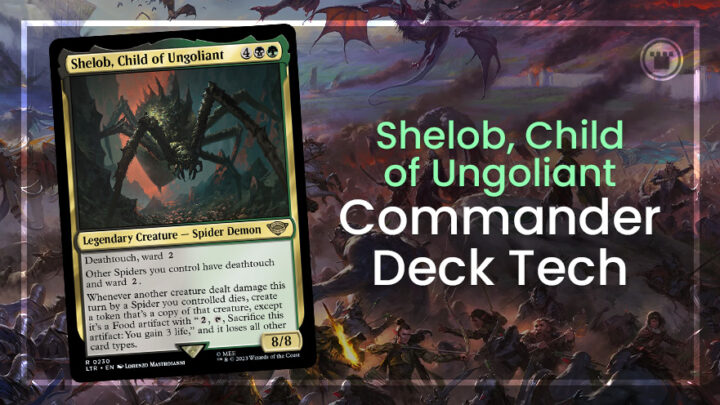Lord of the Rings: Tales of Middle Earth is loaded with legendary creature cards that represent Tolkien’s characters, and many of these make for interesting and powerful Commanders. One of these notable The Lord of the Rings figures, and one who deserves this deck tech, is Shelob, Child of Ungoliant. At one point in the story, this massive spider manages to capture Frodo, stun him and keep him around for a later meal.
They did a great job of representing this moment with Shelob’s effects. Whenever a creature that is damaged by one of your spiders dies, you make a Food token copy of that creature. This means if you took down a creature with any activated, static or triggered abilities, the Food holds on to them, and sometimes that can be great.
Shelob brings a lot of additional power to the table, too. Not only is she an impressive six mana 8/8 with deathtouch and ward 2, but she also grants those keywords to all of your spiders.
As for building a Commander deck with her at the helm, it’s not as easy as catching prey in your web. Because there are a number of things going on with Shelob, I think there are three main synergy components you should include to maximize Shelob’s power.
Component one: Spiders Matter
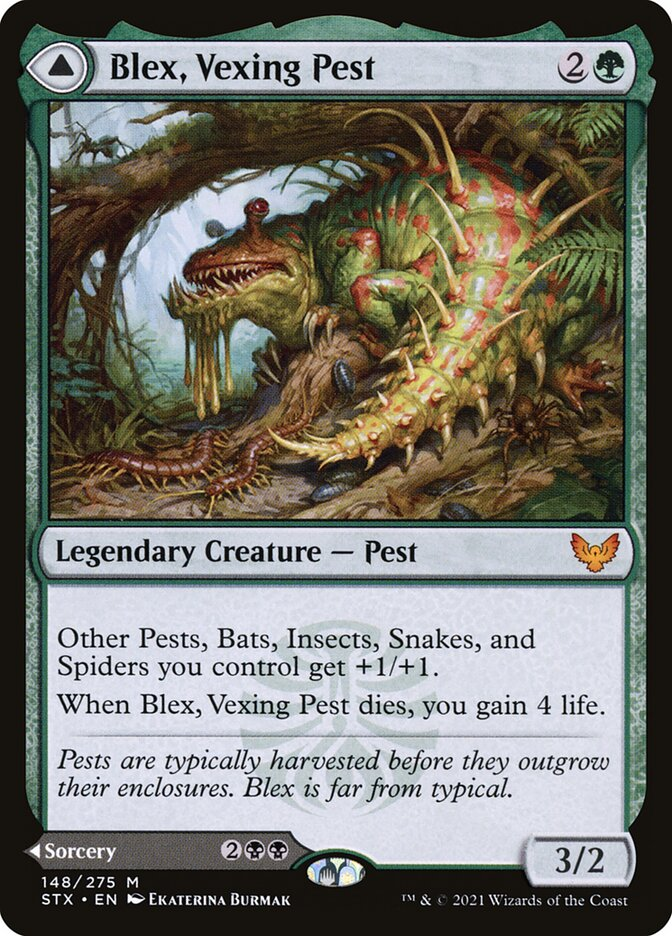


This is probably the most obvious direction to go in. After all, you’re going to want some spiders around to turn opposing creatures into food. The more spiders you have, the more impressive Shelob is.
This means you also want to run other cards that get better the more spiders you have in play. While there isn’t an overwhelming number of these types of payoffs, there are some powerful ones out there.
Blex, Vexing Pest is a spider lord that even comes with an alternate mode because it is a modal double-faced card. Rotwidow Pack can crank out spider tokens, all while gaining you extra life.
Ishkanah can make your opponent lose one life for each spider you control. The fact that Rotwidow Pack and Ishkanah make spider tokens also goes really well with deathtouch since each token can threaten to trade for anything while turning it into food.

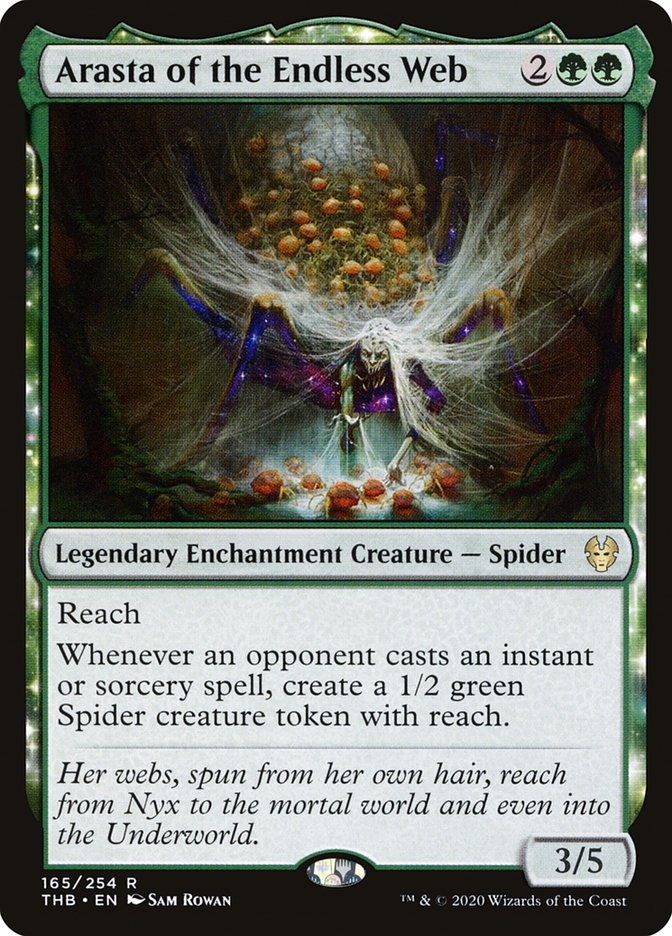

There also happen to be several other ways to generate multiple spider bodies at a time, and you’re going to want to include those, too.
For example, Curse of Clinging Webs gives you a spider token any time an opposing nontoken creature dies. This is great here because opposing creatures are going to be dying a lot thanks to all of your deathtouch. With the Curse in play, you get a new token and food any time that happens.
Meanwhile, Arasta generates a spider any time an opponent casts an instant or sorcery and Twin-Silk Spider gives you two bodies right away.
Component two: Abusing Deathtouch
Since all of your creatures are going to be able to kill anything they do damage, you’re also going to want to include a few cards in the deck that let you take advantage of this fact. As discussed above, making multiple spider tokens is one of the ways you can do this, but there are some other things you can do.
Most notably, you want to include some ways to allow your creatures to damage opposing creatures outside of combat. Deathtouch kills the creature no matter how it gets damaged.
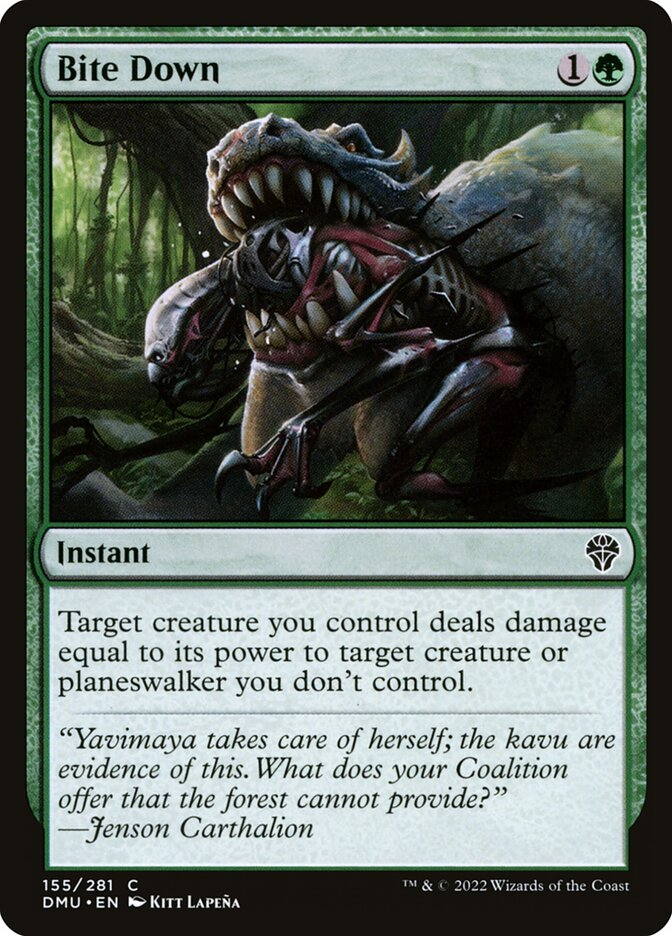
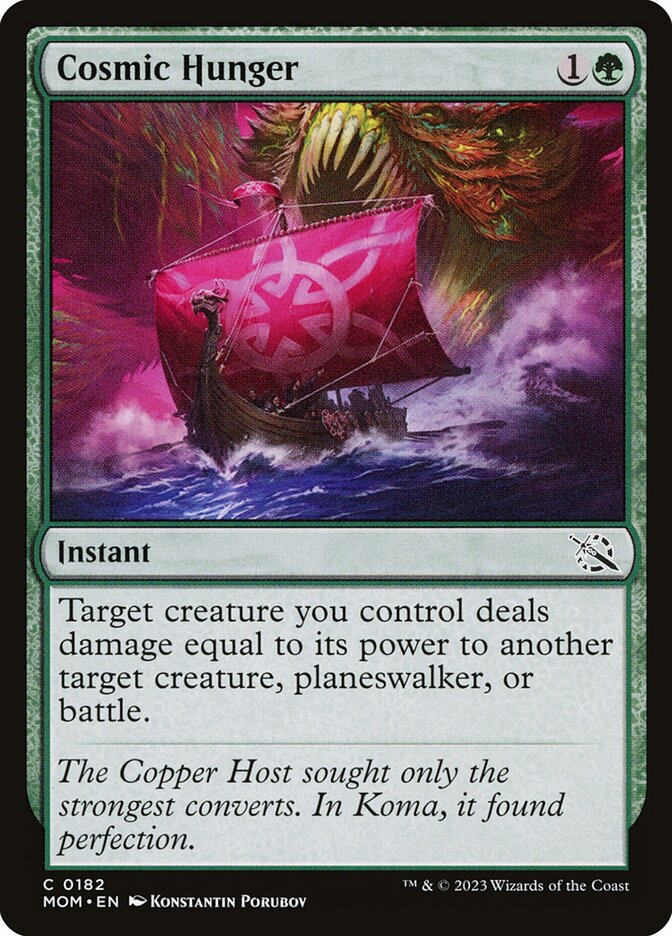

One of the easiest ways to do this is with “bite” effects. These are spells that allow your creature to do damage equal to their power to an opposing creature.
You can also make use of fight effects, but those tend to be far riskier since the opposing creature will also damage yours. I would also advise sticking to instant speed versions of these effects since they give you a much larger window to find an opening.

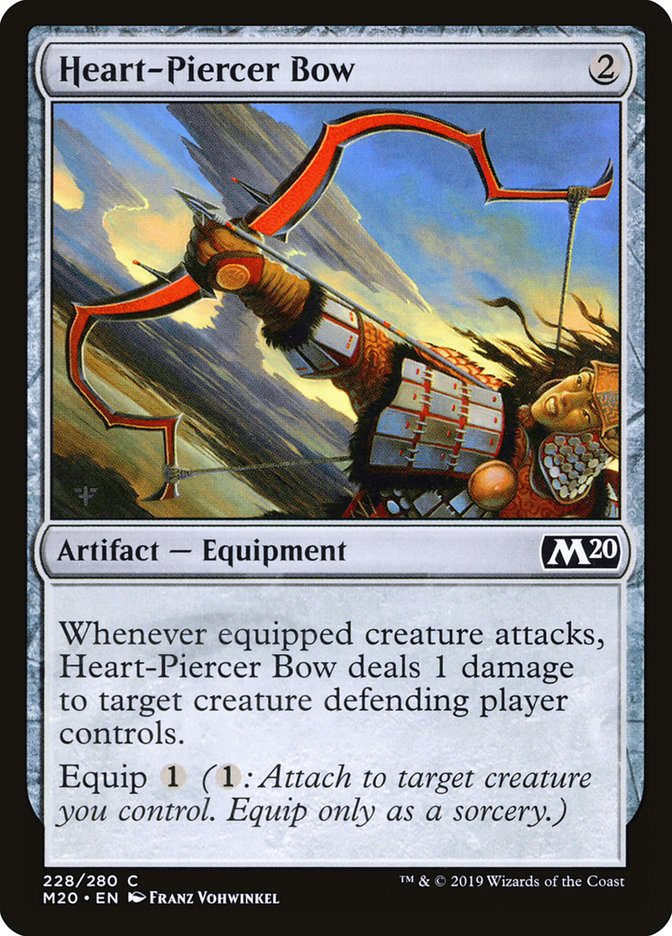
You can also include cards that give your creature(s) a repeatable way to damage opposing creatures. For example, Viridian Longbow turns into “Tap: Destroy target creature” and Heart-Piercer Bow will destroy a creature every time you attack.

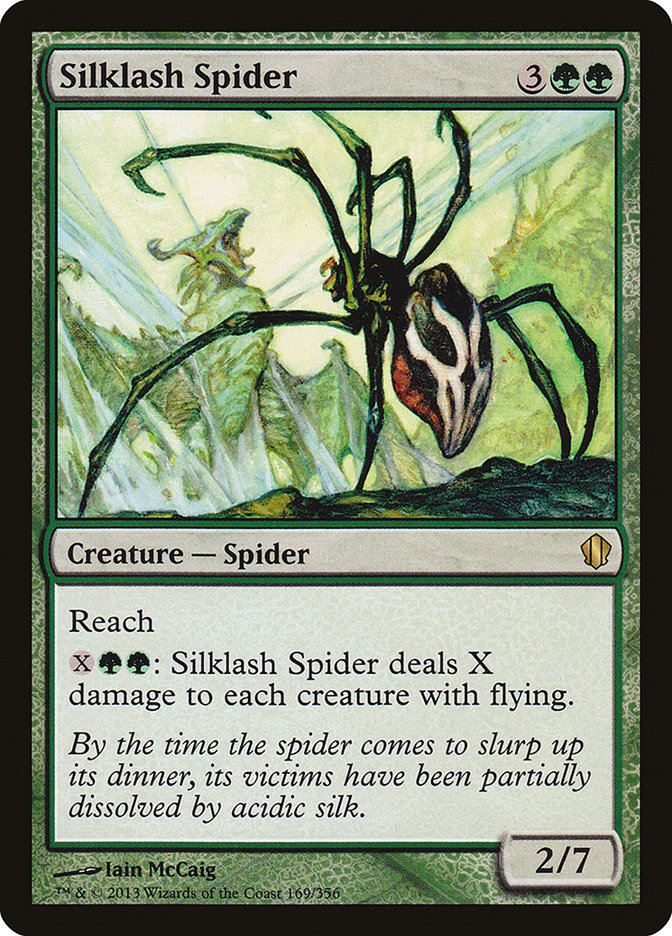
Next, there are also a few Spiders that are particularly nasty with deathtouch because they can inherently damage opposing creatures. If you have Shelob in play with either Spitting Spider or Silklash Spider, you can very easily wipe away every single flier on the board.
Component three: Food
Finally, because this deck is so good at making food, it’s a good idea to include some food payoffs. While Shelob normally likes eating hobbits, there are a couple of them that actually work quite well alongside her.
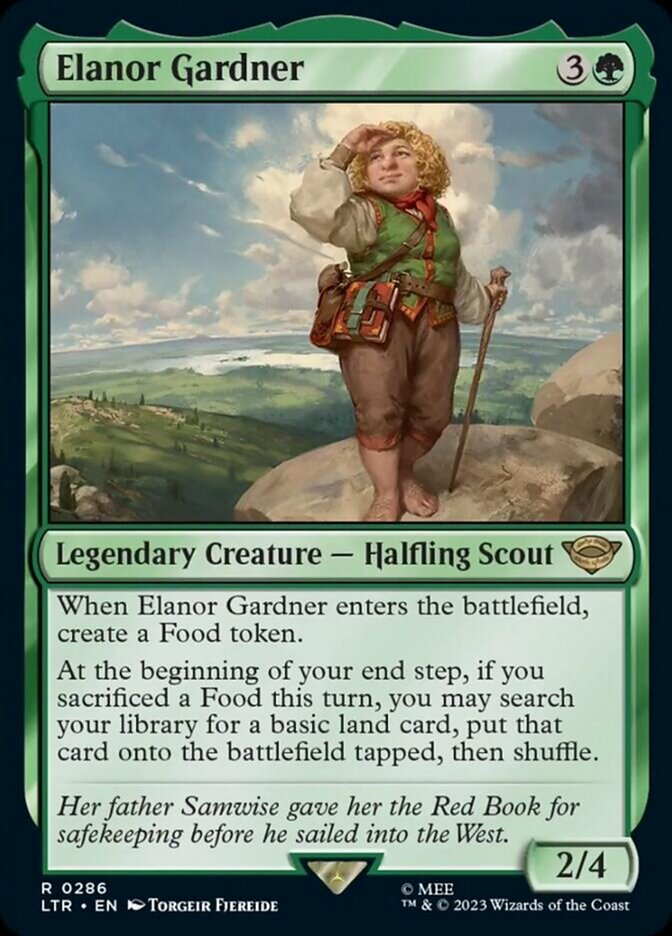
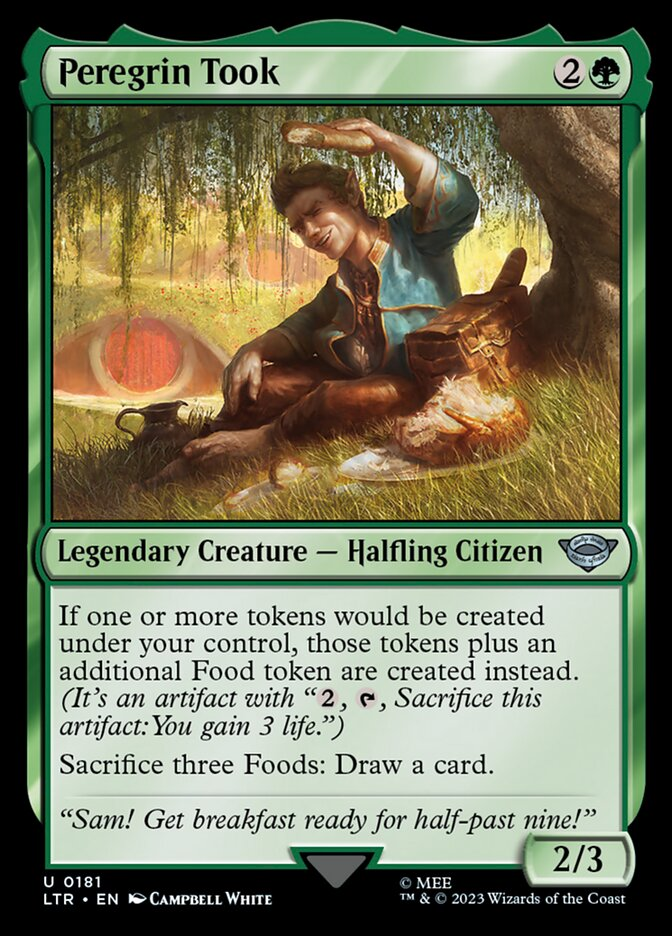
Elanor Gardner allows you to ramp your mana when you sacrifice food and Peregrin Took allows you to cash in Food tokens for cards (while helping generate food at the same time).
All that said, your swarm should be feasting on opponents in no time. You can find the deck list here.
End Step
While I chose to go in this more spider-centric direction, you can also consider going in a more food-centric route than I did. You could also consider adding a lifegain component to the deck since you’re likely to be gaining a significant amount from food tokens.
That’s part of what makes Shelob interesting. You can go in so many different directions. Otherwise, if you’re hungry for some more Lord of the Rings: Tales of Middle Earth Commander content, you can find plenty more of it here on the blog.

Jacob has been playing Magic for the better part of 24 years, and he especially loves playing Magic’s Limited formats. He also holds a PhD in history from the University of Oklahoma. In 2015, he started his YouTube channel, “Nizzahon Magic,” where he combines his interests with many videos covering Magic’s competitive history. When he’s not playing Magic or making Magic content, he can be found teaching college-level history courses or caring for a menagerie of pets with his wife.

